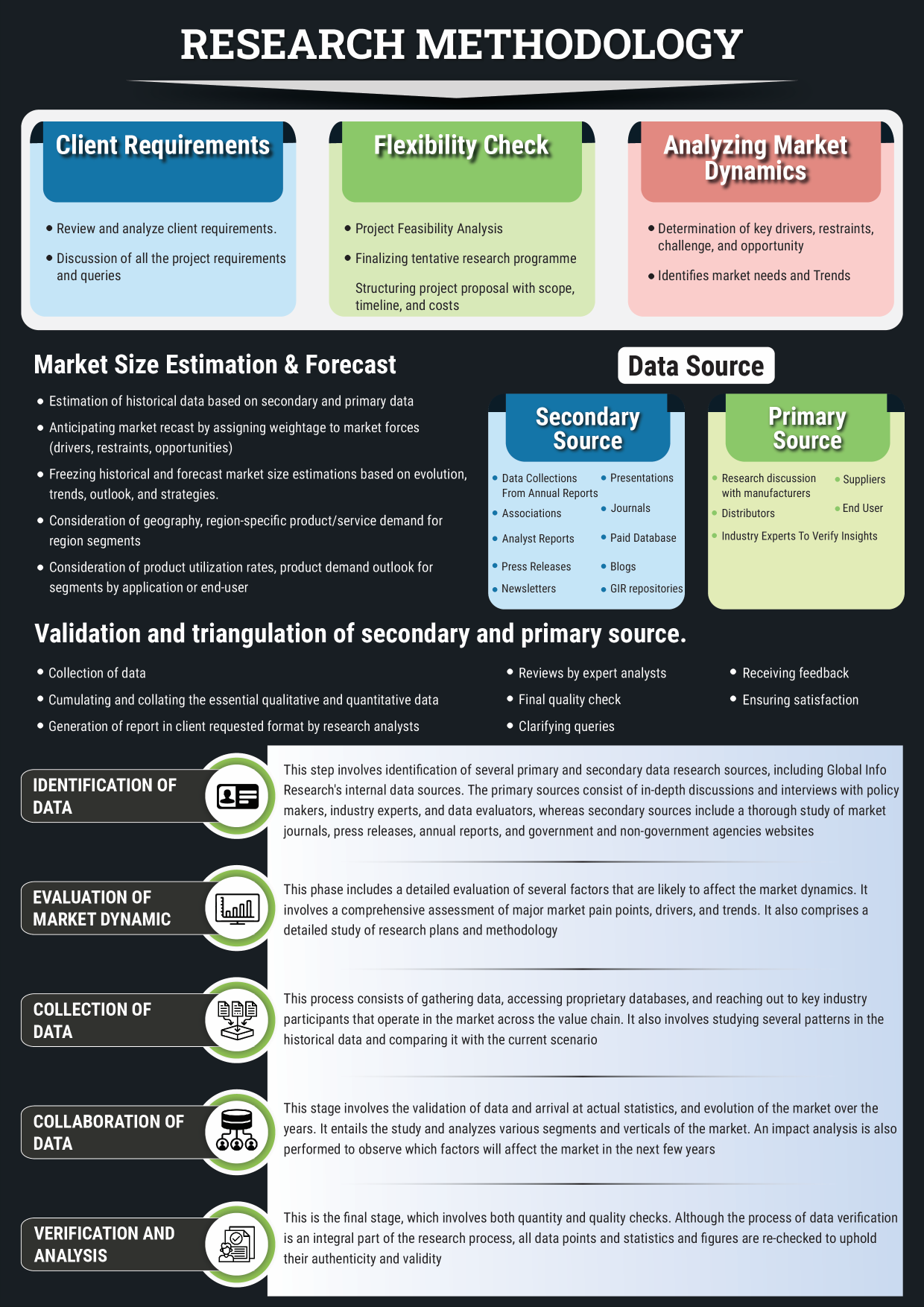Menopausal Hormone Therapy Market 2025: Transforming Women’s Health and Wellness
Menopausal hormone therapy (MHT) is increasingly recognized as a cornerstone of managing the complex physiological changes women face during menopause. As millions of women worldwide transition through menopause, the menopausal hormone therapy market is evolving rapidly, shaped by advances in medical science, changing patient expectations, and growing global demand. By 2025, this market is poised for significant growth, driven by innovation, demographic trends, and shifting healthcare paradigms.
Menopause represents a natural phase in a woman’s life characterized by a decline in estrogen and progesterone production, leading to symptoms like hot flashes, night sweats, mood fluctuations, and bone density loss. Menopausal hormone therapy involves supplementing these hormones to alleviate symptoms and improve quality of life.
Historically, MHT faced scrutiny due to safety concerns, including cardiovascular and cancer risks. However, evolving clinical evidence and more nuanced treatment approaches have renewed confidence in hormone therapy, especially when personalized and carefully monitored. This shift underpins the expanding interest in MHT as part of holistic women’s health care.
Key Market Drivers Fueling Growth
Several pivotal factors are accelerating the expansion of the menopausal hormone therapy market:
- Rising Aging Population: The global increase in women entering menopause creates a larger target population seeking symptom relief and health management.
- Greater Awareness and Education: Enhanced understanding of menopause and hormone therapy benefits encourages more women to seek medical advice and treatment.
- Improved Safety Profiles: Recent research clarifies risk factors and supports safer, personalized treatment regimens, boosting physician and patient confidence.
- Focus on Wellness and Quality of Life: Modern women prioritize maintaining vitality and mental well-being during midlife, aligning well with the goals of MHT.
- Healthcare Accessibility and Digital Health: Telemedicine and improved healthcare infrastructure facilitate easier access to hormone therapy, particularly in underserved regions.
These drivers collectively foster a favorable environment for increased adoption and innovation in the MHT sector.
Innovation Driving the Future of Menopausal Hormone Therapy
Innovation plays a central role in reshaping menopausal hormone therapy, with a focus on improving safety, efficacy, and patient experience:
- Bioidentical Hormones: These hormones closely mimic natural human hormones, potentially offering better symptom control with fewer side effects.
- Diverse Delivery Methods: Transdermal patches, vaginal rings, gels, and implants offer alternatives to traditional oral tablets, providing steady hormone levels and improved patient compliance.
- Personalized Treatment Approaches: Incorporating genetic testing, hormone monitoring, and lifestyle factors allows healthcare providers to tailor therapies to individual needs, optimizing outcomes.
- Holistic Care Models: Combining MHT with lifestyle advice, nutraceuticals, and mental health support addresses menopause as a multifaceted health journey.
- Digital Monitoring Tools: Mobile apps and remote symptom tracking enhance patient engagement and enable timely adjustments to therapy.
These innovations enhance the safety and appeal of hormone therapy, fostering wider acceptance and use.
Regional Market Dynamics: A Global Perspective
The menopausal hormone therapy market exhibits varied growth patterns and challenges across regions:
- North America: Leading the market with high awareness, advanced healthcare infrastructure, and widespread availability of hormone therapies.
- Europe: A mixed landscape shaped by varying regulatory frameworks and cultural attitudes toward MHT, with ongoing efforts to harmonize clinical guidelines.
- Asia-Pacific: Fastest-growing region due to large aging populations, increasing health consciousness, and expanding healthcare access, though cultural barriers persist in some areas.
- Latin America and Middle East/Africa: Emerging markets with improving healthcare systems and growing consumer interest, but affordability and education remain key challenges.
Understanding regional nuances is vital for tailoring marketing strategies and product development to maximize market penetration.
Strategic Considerations for Industry Stakeholders
To succeed in the competitive menopausal hormone therapy market, companies and healthcare providers should focus on:
- Investing in Clinical Research: Continuous evidence generation ensures credibility, regulatory compliance, and addresses safety concerns.
- Offering Diverse Product Portfolios: Catering to varied patient preferences with multiple hormone formulations and delivery systems improves adoption.
- Enhancing Patient and Physician Education: Clear communication helps dispel misconceptions and supports informed decision-making.
- Leveraging Digital Platforms: Online engagement, telehealth services, and mobile tools extend reach and improve adherence.
- Navigating Regulatory and Cultural Landscapes: Compliance and culturally sensitive marketing facilitate smoother market entry and growth.
These strategic approaches enable sustainable growth and build strong patient-provider trust.
Conclusion: Menopausal Hormone Therapy Market Set for Transformative Growth by 2025
The menopausal hormone therapy market is at a transformative juncture, driven by demographic shifts, scientific progress, and evolving consumer expectations. With innovation leading the way toward safer, personalized therapies and broader awareness supporting adoption, MHT is becoming a central pillar of midlife women’s healthcare.
For healthcare market research professionals, manufacturers, and investors, understanding the nuanced market drivers, regional dynamics, and strategic imperatives is essential to unlock the full potential of this expanding sector. As we move toward 2025, menopausal hormone therapy is poised not only to alleviate symptoms but to empower women with holistic, tailored solutions that enhance quality of life.
NOTE:
Quants and Trends is proud to offer an extensive portfolio of meticulously researched healthcare market reports, numbering in the thousands. We also provide tailored customization services to ensure our insights align precisely with your strategic objectives and informational needs. For personalized assistance or to discuss your specific requirements, we invite you to get in touch with our team. We also encourage you to request a complimentary sample PDF report. Please visit our Sample Request Page to receive yours today.
Key Market Players
Eli Lilly
Pfizer
AbbVie
Novo Nordisk
Merck KGaA
Mylan
Bayer
Teva
Novartis
Abbott
Roche
Endo International
Ipsen
ANI Pharmaceuticals
TherapeuticsMD
Segmentation By Type
Estrogen
Progesterone
Segmentation By Application
Hospital
Clinic
Others
Segmentation By Region
North America (United States, Canada, and Mexico)
Europe (Germany, France, UK, Russia, Italy, and Rest of Europe)
Asia-Pacific (China, Japan, South Korea, India, Southeast Asia, Australia and Rest of Asia-Pacific)
South America (Brazil, Argentina and Rest of South America)
Middle East & Africa (Turkey, Saudi Arabia, UAE, Rest of Middle East & Africa)
Market SWOT Analysis
What are the strengths of the Menopausal Hormone Therapy Market in 2025?
The growing awareness of menopause-related health issues and increasing acceptance of hormone therapy as a treatment option are key strengths. Additionally, innovations in drug delivery systems and personalized therapies are enhancing the effectiveness and safety of treatments, leading to better patient outcomes.
What are the weaknesses of the Menopausal Hormone Therapy Market in 2025?
One of the key weaknesses is the ongoing concern over the long-term risks of hormone therapy, such as cardiovascular diseases and breast cancer. This skepticism from both patients and healthcare providers may limit market growth. Additionally, high treatment costs may make hormone therapy inaccessible for a significant portion of the population.
What opportunities exist in the Menopausal Hormone Therapy Market in 2025?
With the aging global population, there is an increasing demand for menopause-related treatments. Advancements in biotechnology and the development of safer, more effective hormone therapies present significant opportunities. There’s also potential for expanding market reach in developing countries as healthcare infrastructure improves.
What are the threats to the Menopausal Hormone Therapy Market in 2025?
Regulatory challenges and evolving clinical guidelines pose a threat to the market. Negative perceptions of hormone therapy, particularly around its side effects, and the rise of alternative treatments such as non-hormonal therapies could also hinder the market's growth. Moreover, economic factors, such as healthcare cost cuts, could limit access to hormone treatments.
Market PESTEL Analysis
What political factors impact the Menopausal Hormone Therapy Market in 2025?
Government policies on healthcare spending and regulation of hormone therapies can significantly influence the market. Changes in public health initiatives, such as increased funding for women's health, or restrictions in hormone treatment access due to political ideologies, could shape market dynamics.
What economic factors affect the Menopausal Hormone Therapy Market in 2025?
Economic factors like healthcare affordability, insurance coverage, and the increasing burden of healthcare costs affect the market. A growing middle class in emerging economies may drive demand for hormone therapy, but economic downturns could reduce disposable income, limiting access for some populations.
How do social factors influence the Menopausal Hormone Therapy Market in 2025?
Cultural attitudes towards menopause and hormone therapy play a crucial role. In societies where menopause is stigmatized or misunderstood, adoption rates may be lower. However, growing awareness and social movements advocating for better menopausal care may encourage wider acceptance of hormone therapy.
What technological factors are important for the Menopausal Hormone Therapy Market in 2025?
Advancements in drug delivery systems, like transdermal patches and personalized medicine, offer opportunities to improve the efficacy and safety of hormone therapies. Innovation in biotechnology and research on alternative treatments is also key to providing safer options for menopausal women.
What environmental factors affect the Menopausal Hormone Therapy Market in 2025?
Environmental sustainability concerns, such as the production and disposal of pharmaceutical products, may influence how hormone therapies are manufactured. Eco-conscious consumers and regulations on environmental impact might push for more sustainable practices in the production of hormone therapies.
What legal factors are relevant to the Menopausal Hormone Therapy Market in 2025?
Regulations around drug approval, clinical trial transparency, and intellectual property rights are critical in shaping the market. Legal challenges regarding hormone therapy risks, such as lawsuits related to side effects, could impact public trust and market growth. Additionally, international laws regarding the distribution and marketing of such treatments can influence global market strategies.
Market SIPOC Analysis
Who are the suppliers in the Menopausal Hormone Therapy Market in 2025?
The suppliers include pharmaceutical companies that manufacture hormone therapies, biotech firms focusing on innovative treatments, and raw material providers for hormone-based drugs. Additionally, research institutions contribute by advancing scientific knowledge on menopausal health.
What inputs are required for the Menopausal Hormone Therapy Market in 2025?
Key inputs include research and development in hormonal treatments, clinical trial data, regulatory approvals, active pharmaceutical ingredients (APIs), and advanced drug delivery systems like patches and pills. Training healthcare professionals on new therapies also plays a role in input requirements.
What process steps are involved in the Menopausal Hormone Therapy Market in 2025?
The process steps include research and development of new hormone therapies, regulatory testing and approvals, production and manufacturing, distribution through healthcare providers and pharmacies, and patient education on treatment options. Post-market surveillance and ongoing clinical studies are also part of the process.
Who are the customers in the Menopausal Hormone Therapy Market in 2025?
The primary customers are women experiencing menopause, healthcare providers who prescribe hormone therapy, and healthcare systems or insurance companies that cover the costs. There is also a growing demand from patients seeking personalized or alternative treatments.
What are the outputs in the Menopausal Hormone Therapy Market in 2025?
The outputs include a range of menopausal hormone therapies like estrogen-only or combined therapies, personalized treatment plans, educational materials for patients, and ongoing research findings. These outputs aim to improve the quality of life for women undergoing menopause while addressing symptoms effectively.
Market Porter's Five Forces
What is the threat of new entrants in the Menopausal Hormone Therapy Market in 2025?
The threat of new entrants is moderate. While the market is attractive due to increasing demand, significant regulatory hurdles and high R&D costs act as barriers to entry. Established pharmaceutical companies with resources and expertise dominate the market, making it difficult for new players to compete effectively.
What is the bargaining power of suppliers in the Menopausal Hormone Therapy Market in 2025?
The bargaining power of suppliers is relatively low. Although the supply of raw materials and APIs is essential, there are many suppliers, which reduces their individual influence. However, specialized suppliers of innovative drug delivery systems or biotechnologies may hold more power due to their niche products.
What is the bargaining power of buyers in the Menopausal Hormone Therapy Market in 2025?
The bargaining power of buyers is moderate. Patients have some options in terms of treatments, but hormone therapy remains the most effective for many. Healthcare providers and insurance companies also have influence in determining treatment options, but overall, buyer power is limited due to the specialized nature of the therapies.
What is the threat of substitute products in the Menopausal Hormone Therapy Market in 2025?
The threat of substitutes is moderate to high. Non-hormonal alternatives, like lifestyle changes, herbal treatments, and new medications, are gaining popularity. As more evidence supports these options, they may become a more attractive choice for women seeking alternatives to hormone therapy.
What is the intensity of competitive rivalry in the Menopausal Hormone Therapy Market in 2025?
The intensity of competitive rivalry is high. The market is dominated by major pharmaceutical companies, with constant pressure to innovate and offer better, safer treatments. Competition is fierce not only in terms of price but also in differentiating therapies based on delivery methods, effectiveness, and patient safety profiles.
Market Upstream Analysis
What are the key raw materials involved in the Menopausal Hormone Therapy Market in 2025?
The key raw materials include synthetic and bio-identical hormones like estrogen, progesterone, and testosterone, as well as excipients used in the formulation of hormone therapies. Advanced delivery systems like transdermal patches or oral tablets require specialized components, adding complexity to the supply chain.
What role do suppliers play in the Menopausal Hormone Therapy Market in 2025?
Suppliers play a crucial role by providing the active pharmaceutical ingredients (APIs), hormone precursors, and specialized materials for drug formulation. They also contribute to the development of new delivery methods, such as transdermal systems or implantable devices, which are vital for improving patient outcomes.
How does the research and development process impact the Menopausal Hormone Therapy Market in 2025?
R&D is central to the upstream process, as new hormone therapies and improved formulations need extensive clinical testing before they can be approved for use. Investment in R&D determines the innovation in therapy options and enhances safety profiles, which are key for market growth and adoption.
What are the regulatory challenges faced by suppliers in the Menopausal Hormone Therapy Market in 2025?
Suppliers must navigate stringent regulatory requirements set by authorities like the FDA and EMA, which govern the approval of hormone therapies. Compliance with good manufacturing practices (GMP), rigorous clinical trials, and post-market surveillance requirements add complexity and cost to the upstream process.
How do the costs of production affect the Menopausal Hormone Therapy Market in 2025?
The costs of production, particularly for advanced formulations and high-quality hormone APIs, directly impact the pricing of hormone therapies. Rising costs of raw materials, regulatory compliance, and the need for constant innovation can drive up prices, potentially limiting accessibility for some patients.
What is the impact of innovation in the upstream sector of the Menopausal Hormone Therapy Market in 2025?
Innovation in the upstream sector, such as advancements in bio-synthesis, hormone analogs, and drug delivery systems, has a significant impact on treatment options and market dynamics. These innovations can enhance the efficacy, safety, and patient compliance of therapies, driving both demand and competition in the market.
Market Midstream Analysis
What are the key activities in the midstream sector of the Menopausal Hormone Therapy Market in 2025?
The key activities include the manufacturing, formulation, and packaging of hormone therapy products. This stage also involves ensuring product quality, compliance with regulatory standards, and preparation for distribution. The development of various delivery methods, such as oral tablets, patches, and gels, also takes place here.
How do distribution channels impact the Menopausal Hormone Therapy Market in 2025?
Distribution channels are critical in ensuring the availability of menopausal hormone therapies to healthcare providers and patients. These channels include wholesalers, retail pharmacies, online pharmacies, and hospitals. Efficient distribution networks are essential for meeting the growing demand and improving patient access to treatment.
What role do healthcare providers play in the midstream sector of the Menopausal Hormone Therapy Market in 2025?
Healthcare providers, such as gynecologists, endocrinologists, and general practitioners, are key players in prescribing hormone therapies. Their knowledge, recommendations, and patient relationships directly influence the uptake of treatments. Education and awareness from healthcare professionals also help increase the adoption of new and safer hormone therapy options.
How does the market regulation impact the midstream sector in the Menopausal Hormone Therapy Market in 2025?
Regulatory standards for manufacturing, labeling, and packaging play a significant role in ensuring the safety and efficacy of hormone therapies. Compliance with these regulations ensures that products meet the required quality standards. Changes in regulatory frameworks, such as tighter controls on product claims or packaging requirements, can influence manufacturing processes.
What challenges do manufacturers face in the midstream sector of the Menopausal Hormone Therapy Market in 2025?
Manufacturers face challenges related to maintaining high-quality production standards while meeting increasing demand. Regulatory compliance, costs of production, and the need for continuous innovation to offer new formulations and delivery systems can strain resources. Additionally, managing supply chain disruptions and raw material shortages poses ongoing risks.
How does innovation in drug formulations impact the midstream sector of the Menopausal Hormone Therapy Market in 2025?
Innovation in drug formulations, such as the development of more effective and patient-friendly delivery systems, directly affects manufacturing strategies. Improved formulations that offer fewer side effects and better compliance can enhance product appeal, making it essential for manufacturers to invest in R&D and advanced technologies to stay competitive in the market.
Market Downstream Analysis
What are the key activities in the downstream sector of the Menopausal Hormone Therapy Market in 2025?
The key activities include the sale and distribution of hormone therapy products to patients through pharmacies, healthcare providers, and online platforms. Additionally, patient education and support services, including counseling on treatment options, are vital in ensuring adherence and proper use of therapies.
How do healthcare providers influence the downstream sector of the Menopausal Hormone Therapy Market in 2025?
Healthcare providers play a critical role in the downstream sector by diagnosing menopausal symptoms, recommending suitable therapies, and monitoring patient progress. Their guidance influences patient choices and therapy adherence, shaping the overall success of hormone treatments in the market.
What role does patient awareness play in the downstream sector of the Menopausal Hormone Therapy Market in 2025?
Patient awareness is crucial for market growth, as women need to be informed about available treatment options and their potential benefits and risks. Increased awareness, driven by campaigns and educational initiatives, encourages women to seek appropriate care and make informed decisions about hormone therapy.
How does the pricing and insurance coverage affect the downstream sector in the Menopausal Hormone Therapy Market in 2025?
Pricing and insurance coverage significantly impact the accessibility of hormone therapies. Affordable pricing and broad insurance coverage improve patient access, while high treatment costs or limited insurance reimbursement can restrict access, particularly for underserved populations.
What are the challenges faced in the downstream sector of the Menopausal Hormone Therapy Market in 2025?
The challenges include managing diverse patient needs and preferences, as some may seek alternative therapies due to concerns over side effects. Additionally, fluctuating drug prices, variations in insurance coverage, and regional access disparities create barriers to consistent patient access to hormone treatments.
How does the introduction of new therapies affect the downstream sector of the Menopausal Hormone Therapy Market in 2025?
The introduction of new therapies, especially those with improved safety profiles or more convenient delivery methods, can drive patient demand and market growth. It also pushes healthcare providers to stay updated on the latest treatment options, influencing their prescribing practices and overall treatment strategies.
Chapter 1, to describe Menopausal Hormone Therapy product scope, market overview, market estimation caveats and base year.
Chapter 2, to profile the top players of Menopausal Hormone Therapy, with revenue, gross margin and global market share of Menopausal Hormone Therapy from 2018 to 2023.
Chapter 3, the Menopausal Hormone Therapy competitive situation, revenue and global market share of top players are analyzed emphatically by landscape contrast.
Chapter 4 and 5, to segment the market size by Type and application, with consumption value and growth rate by Type, application, from 2018 to 2029.
Chapter 6, 7, 8, 9, and 10, to break the market size data at the country level, with revenue and market share for key countries in the world, from 2018 to 2023.and Menopausal Hormone Therapy market forecast, by regions, type and application, with consumption value, from 2024 to 2029.
Chapter 11, market dynamics, drivers, restraints, trends and Porters Five Forces analysis.
Chapter 12, the key raw materials and key suppliers, and industry chain of Menopausal Hormone Therapy.
Chapter 13, to describe Menopausal Hormone Therapy research findings and conclusion.
1 Market Overview
1.1 Product Overview and Scope of Menopausal Hormone Therapy
1.2 Market Estimation Caveats and Base Year
1.3 Classification of Menopausal Hormone Therapy by Type
1.3.1 Overview: Global Menopausal Hormone Therapy Market Size by Type: 2018 Versus 2022 Versus 2029
1.3.2 Global Menopausal Hormone Therapy Consumption Value Market Share by Type in 2022
1.3.3 Estrogen
1.3.4 Progesterone
1.4 Global Menopausal Hormone Therapy Market by Application
1.4.1 Overview: Global Menopausal Hormone Therapy Market Size by Application: 2018 Versus 2022 Versus 2029
1.4.2 Hospital
1.4.3 Clinic
1.4.4 Others
1.5 Global Menopausal Hormone Therapy Market Size & Forecast
1.6 Global Menopausal Hormone Therapy Market Size and Forecast by Region
1.6.1 Global Menopausal Hormone Therapy Market Size by Region: 2018 VS 2022 VS 2029
1.6.2 Global Menopausal Hormone Therapy Market Size by Region, (2018-2029)
1.6.3 North America Menopausal Hormone Therapy Market Size and Prospect (2018-2029)
1.6.4 Europe Menopausal Hormone Therapy Market Size and Prospect (2018-2029)
1.6.5 Asia-Pacific Menopausal Hormone Therapy Market Size and Prospect (2018-2029)
1.6.6 South America Menopausal Hormone Therapy Market Size and Prospect (2018-2029)
1.6.7 Middle East and Africa Menopausal Hormone Therapy Market Size and Prospect (2018-2029)
2 Company Profiles
2.1 Eli Lilly
2.1.1 Eli Lilly Details
2.1.2 Eli Lilly Major Business
2.1.3 Eli Lilly Menopausal Hormone Therapy Product and Solutions
2.1.4 Eli Lilly Menopausal Hormone Therapy Revenue, Gross Margin and Market Share (2018-2023)
2.1.5 Eli Lilly Recent Developments and Future Plans
2.2 Pfizer
2.2.1 Pfizer Details
2.2.2 Pfizer Major Business
2.2.3 Pfizer Menopausal Hormone Therapy Product and Solutions
2.2.4 Pfizer Menopausal Hormone Therapy Revenue, Gross Margin and Market Share (2018-2023)
2.2.5 Pfizer Recent Developments and Future Plans
2.3 AbbVie
2.3.1 AbbVie Details
2.3.2 AbbVie Major Business
2.3.3 AbbVie Menopausal Hormone Therapy Product and Solutions
2.3.4 AbbVie Menopausal Hormone Therapy Revenue, Gross Margin and Market Share (2018-2023)
2.3.5 AbbVie Recent Developments and Future Plans
2.4 Novo Nordisk
2.4.1 Novo Nordisk Details
2.4.2 Novo Nordisk Major Business
2.4.3 Novo Nordisk Menopausal Hormone Therapy Product and Solutions
2.4.4 Novo Nordisk Menopausal Hormone Therapy Revenue, Gross Margin and Market Share (2018-2023)
2.4.5 Novo Nordisk Recent Developments and Future Plans
2.5 Merck KGaA
2.5.1 Merck KGaA Details
2.5.2 Merck KGaA Major Business
2.5.3 Merck KGaA Menopausal Hormone Therapy Product and Solutions
2.5.4 Merck KGaA Menopausal Hormone Therapy Revenue, Gross Margin and Market Share (2018-2023)
2.5.5 Merck KGaA Recent Developments and Future Plans
2.6 Mylan
2.6.1 Mylan Details
2.6.2 Mylan Major Business
2.6.3 Mylan Menopausal Hormone Therapy Product and Solutions
2.6.4 Mylan Menopausal Hormone Therapy Revenue, Gross Margin and Market Share (2018-2023)
2.6.5 Mylan Recent Developments and Future Plans
2.7 Bayer
2.7.1 Bayer Details
2.7.2 Bayer Major Business
2.7.3 Bayer Menopausal Hormone Therapy Product and Solutions
2.7.4 Bayer Menopausal Hormone Therapy Revenue, Gross Margin and Market Share (2018-2023)
2.7.5 Bayer Recent Developments and Future Plans
2.8 Teva
2.8.1 Teva Details
2.8.2 Teva Major Business
2.8.3 Teva Menopausal Hormone Therapy Product and Solutions
2.8.4 Teva Menopausal Hormone Therapy Revenue, Gross Margin and Market Share (2018-2023)
2.8.5 Teva Recent Developments and Future Plans
2.9 Novartis
2.9.1 Novartis Details
2.9.2 Novartis Major Business
2.9.3 Novartis Menopausal Hormone Therapy Product and Solutions
2.9.4 Novartis Menopausal Hormone Therapy Revenue, Gross Margin and Market Share (2018-2023)
2.9.5 Novartis Recent Developments and Future Plans
2.10 Abbott
2.10.1 Abbott Details
2.10.2 Abbott Major Business
2.10.3 Abbott Menopausal Hormone Therapy Product and Solutions
2.10.4 Abbott Menopausal Hormone Therapy Revenue, Gross Margin and Market Share (2018-2023)
2.10.5 Abbott Recent Developments and Future Plans
2.11 Roche
2.11.1 Roche Details
2.11.2 Roche Major Business
2.11.3 Roche Menopausal Hormone Therapy Product and Solutions
2.11.4 Roche Menopausal Hormone Therapy Revenue, Gross Margin and Market Share (2018-2023)
2.11.5 Roche Recent Developments and Future Plans
2.12 Endo International
2.12.1 Endo International Details
2.12.2 Endo International Major Business
2.12.3 Endo International Menopausal Hormone Therapy Product and Solutions
2.12.4 Endo International Menopausal Hormone Therapy Revenue, Gross Margin and Market Share (2018-2023)
2.12.5 Endo International Recent Developments and Future Plans
2.13 Ipsen
2.13.1 Ipsen Details
2.13.2 Ipsen Major Business
2.13.3 Ipsen Menopausal Hormone Therapy Product and Solutions
2.13.4 Ipsen Menopausal Hormone Therapy Revenue, Gross Margin and Market Share (2018-2023)
2.13.5 Ipsen Recent Developments and Future Plans
2.14 ANI Pharmaceuticals
2.14.1 ANI Pharmaceuticals Details
2.14.2 ANI Pharmaceuticals Major Business
2.14.3 ANI Pharmaceuticals Menopausal Hormone Therapy Product and Solutions
2.14.4 ANI Pharmaceuticals Menopausal Hormone Therapy Revenue, Gross Margin and Market Share (2018-2023)
2.14.5 ANI Pharmaceuticals Recent Developments and Future Plans
2.15 TherapeuticsMD
2.15.1 TherapeuticsMD Details
2.15.2 TherapeuticsMD Major Business
2.15.3 TherapeuticsMD Menopausal Hormone Therapy Product and Solutions
2.15.4 TherapeuticsMD Menopausal Hormone Therapy Revenue, Gross Margin and Market Share (2018-2023)
2.15.5 TherapeuticsMD Recent Developments and Future Plans
3 Market Competition, by Players
3.1 Global Menopausal Hormone Therapy Revenue and Share by Players (2018-2023)
3.2 Market Share Analysis (2022)
3.2.1 Market Share of Menopausal Hormone Therapy by Company Revenue
3.2.2 Top 3 Menopausal Hormone Therapy Players Market Share in 2022
3.2.3 Top 6 Menopausal Hormone Therapy Players Market Share in 2022
3.3 Menopausal Hormone Therapy Market: Overall Company Footprint Analysis
3.3.1 Menopausal Hormone Therapy Market: Region Footprint
3.3.2 Menopausal Hormone Therapy Market: Company Product Type Footprint
3.3.3 Menopausal Hormone Therapy Market: Company Product Application Footprint
3.4 New Market Entrants and Barriers to Market Entry
3.5 Mergers, Acquisition, Agreements, and Collaborations
4 Market Size Segment by Type
4.1 Global Menopausal Hormone Therapy Consumption Value and Market Share by Type (2018-2023)
4.2 Global Menopausal Hormone Therapy Market Forecast by Type (2024-2029)
5 Market Size Segment by Application
5.1 Global Menopausal Hormone Therapy Consumption Value Market Share by Application (2018-2023)
5.2 Global Menopausal Hormone Therapy Market Forecast by Application (2024-2029)
6 North America
6.1 North America Menopausal Hormone Therapy Consumption Value by Type (2018-2029)
6.2 North America Menopausal Hormone Therapy Consumption Value by Application (2018-2029)
6.3 North America Menopausal Hormone Therapy Market Size by Country
6.3.1 North America Menopausal Hormone Therapy Consumption Value by Country (2018-2029)
6.3.2 United States Menopausal Hormone Therapy Market Size and Forecast (2018-2029)
6.3.3 Canada Menopausal Hormone Therapy Market Size and Forecast (2018-2029)
6.3.4 Mexico Menopausal Hormone Therapy Market Size and Forecast (2018-2029)
7 Europe
7.1 Europe Menopausal Hormone Therapy Consumption Value by Type (2018-2029)
7.2 Europe Menopausal Hormone Therapy Consumption Value by Application (2018-2029)
7.3 Europe Menopausal Hormone Therapy Market Size by Country
7.3.1 Europe Menopausal Hormone Therapy Consumption Value by Country (2018-2029)
7.3.2 Germany Menopausal Hormone Therapy Market Size and Forecast (2018-2029)
7.3.3 France Menopausal Hormone Therapy Market Size and Forecast (2018-2029)
7.3.4 United Kingdom Menopausal Hormone Therapy Market Size and Forecast (2018-2029)
7.3.5 Russia Menopausal Hormone Therapy Market Size and Forecast (2018-2029)
7.3.6 Italy Menopausal Hormone Therapy Market Size and Forecast (2018-2029)
8 Asia-Pacific
8.1 Asia-Pacific Menopausal Hormone Therapy Consumption Value by Type (2018-2029)
8.2 Asia-Pacific Menopausal Hormone Therapy Consumption Value by Application (2018-2029)
8.3 Asia-Pacific Menopausal Hormone Therapy Market Size by Region
8.3.1 Asia-Pacific Menopausal Hormone Therapy Consumption Value by Region (2018-2029)
8.3.2 China Menopausal Hormone Therapy Market Size and Forecast (2018-2029)
8.3.3 Japan Menopausal Hormone Therapy Market Size and Forecast (2018-2029)
8.3.4 South Korea Menopausal Hormone Therapy Market Size and Forecast (2018-2029)
8.3.5 India Menopausal Hormone Therapy Market Size and Forecast (2018-2029)
8.3.6 Southeast Asia Menopausal Hormone Therapy Market Size and Forecast (2018-2029)
8.3.7 Australia Menopausal Hormone Therapy Market Size and Forecast (2018-2029)
9 South America
9.1 South America Menopausal Hormone Therapy Consumption Value by Type (2018-2029)
9.2 South America Menopausal Hormone Therapy Consumption Value by Application (2018-2029)
9.3 South America Menopausal Hormone Therapy Market Size by Country
9.3.1 South America Menopausal Hormone Therapy Consumption Value by Country (2018-2029)
9.3.2 Brazil Menopausal Hormone Therapy Market Size and Forecast (2018-2029)
9.3.3 Argentina Menopausal Hormone Therapy Market Size and Forecast (2018-2029)
10 Middle East & Africa
10.1 Middle East & Africa Menopausal Hormone Therapy Consumption Value by Type (2018-2029)
10.2 Middle East & Africa Menopausal Hormone Therapy Consumption Value by Application (2018-2029)
10.3 Middle East & Africa Menopausal Hormone Therapy Market Size by Country
10.3.1 Middle East & Africa Menopausal Hormone Therapy Consumption Value by Country (2018-2029)
10.3.2 Turkey Menopausal Hormone Therapy Market Size and Forecast (2018-2029)
10.3.3 Saudi Arabia Menopausal Hormone Therapy Market Size and Forecast (2018-2029)
10.3.4 UAE Menopausal Hormone Therapy Market Size and Forecast (2018-2029)
11 Market Dynamics
11.1 Menopausal Hormone Therapy Market Drivers
11.2 Menopausal Hormone Therapy Market Restraints
11.3 Menopausal Hormone Therapy Trends Analysis
11.4 Porters Five Forces Analysis
11.4.1 Threat of New Entrants
11.4.2 Bargaining Power of Suppliers
11.4.3 Bargaining Power of Buyers
11.4.4 Threat of Substitutes
11.4.5 Competitive Rivalry
12 Industry Chain Analysis
12.1 Menopausal Hormone Therapy Industry Chain
12.2 Menopausal Hormone Therapy Upstream Analysis
12.3 Menopausal Hormone Therapy Midstream Analysis
12.4 Menopausal Hormone Therapy Downstream Analysis
13 Research Findings and Conclusion
14 Appendix
14.1 Methodology
14.2 Research Process and Data Source
14.3 Disclaimer
List of Tables
Table 1. Global Menopausal Hormone Therapy Consumption Value by Type, (USD Million), 2018 & 2022 & 2029
Table 2. Global Menopausal Hormone Therapy Consumption Value by Application, (USD Million), 2018 & 2022 & 2029
Table 3. Global Menopausal Hormone Therapy Consumption Value by Region (2018-2023) & (USD Million)
Table 4. Global Menopausal Hormone Therapy Consumption Value by Region (2024-2029) & (USD Million)
Table 5. Eli Lilly Company Information, Head Office, and Major Competitors
Table 6. Eli Lilly Major Business
Table 7. Eli Lilly Menopausal Hormone Therapy Product and Solutions
Table 8. Eli Lilly Menopausal Hormone Therapy Revenue (USD Million), Gross Margin and Market Share (2018-2023)
Table 9. Eli Lilly Recent Developments and Future Plans
Table 10. Pfizer Company Information, Head Office, and Major Competitors
Table 11. Pfizer Major Business
Table 12. Pfizer Menopausal Hormone Therapy Product and Solutions
Table 13. Pfizer Menopausal Hormone Therapy Revenue (USD Million), Gross Margin and Market Share (2018-2023)
Table 14. Pfizer Recent Developments and Future Plans
Table 15. AbbVie Company Information, Head Office, and Major Competitors
Table 16. AbbVie Major Business
Table 17. AbbVie Menopausal Hormone Therapy Product and Solutions
Table 18. AbbVie Menopausal Hormone Therapy Revenue (USD Million), Gross Margin and Market Share (2018-2023)
Table 19. AbbVie Recent Developments and Future Plans
Table 20. Novo Nordisk Company Information, Head Office, and Major Competitors
Table 21. Novo Nordisk Major Business
Table 22. Novo Nordisk Menopausal Hormone Therapy Product and Solutions
Table 23. Novo Nordisk Menopausal Hormone Therapy Revenue (USD Million), Gross Margin and Market Share (2018-2023)
Table 24. Novo Nordisk Recent Developments and Future Plans
Table 25. Merck KGaA Company Information, Head Office, and Major Competitors
Table 26. Merck KGaA Major Business
Table 27. Merck KGaA Menopausal Hormone Therapy Product and Solutions
Table 28. Merck KGaA Menopausal Hormone Therapy Revenue (USD Million), Gross Margin and Market Share (2018-2023)
Table 29. Merck KGaA Recent Developments and Future Plans
Table 30. Mylan Company Information, Head Office, and Major Competitors
Table 31. Mylan Major Business
Table 32. Mylan Menopausal Hormone Therapy Product and Solutions
Table 33. Mylan Menopausal Hormone Therapy Revenue (USD Million), Gross Margin and Market Share (2018-2023)
Table 34. Mylan Recent Developments and Future Plans
Table 35. Bayer Company Information, Head Office, and Major Competitors
Table 36. Bayer Major Business
Table 37. Bayer Menopausal Hormone Therapy Product and Solutions
Table 38. Bayer Menopausal Hormone Therapy Revenue (USD Million), Gross Margin and Market Share (2018-2023)
Table 39. Bayer Recent Developments and Future Plans
Table 40. Teva Company Information, Head Office, and Major Competitors
Table 41. Teva Major Business
Table 42. Teva Menopausal Hormone Therapy Product and Solutions
Table 43. Teva Menopausal Hormone Therapy Revenue (USD Million), Gross Margin and Market Share (2018-2023)
Table 44. Teva Recent Developments and Future Plans
Table 45. Novartis Company Information, Head Office, and Major Competitors
Table 46. Novartis Major Business
Table 47. Novartis Menopausal Hormone Therapy Product and Solutions
Table 48. Novartis Menopausal Hormone Therapy Revenue (USD Million), Gross Margin and Market Share (2018-2023)
Table 49. Novartis Recent Developments and Future Plans
Table 50. Abbott Company Information, Head Office, and Major Competitors
Table 51. Abbott Major Business
Table 52. Abbott Menopausal Hormone Therapy Product and Solutions
Table 53. Abbott Menopausal Hormone Therapy Revenue (USD Million), Gross Margin and Market Share (2018-2023)
Table 54. Abbott Recent Developments and Future Plans
Table 55. Roche Company Information, Head Office, and Major Competitors
Table 56. Roche Major Business
Table 57. Roche Menopausal Hormone Therapy Product and Solutions
Table 58. Roche Menopausal Hormone Therapy Revenue (USD Million), Gross Margin and Market Share (2018-2023)
Table 59. Roche Recent Developments and Future Plans
Table 60. Endo International Company Information, Head Office, and Major Competitors
Table 61. Endo International Major Business
Table 62. Endo International Menopausal Hormone Therapy Product and Solutions
Table 63. Endo International Menopausal Hormone Therapy Revenue (USD Million), Gross Margin and Market Share (2018-2023)
Table 64. Endo International Recent Developments and Future Plans
Table 65. Ipsen Company Information, Head Office, and Major Competitors
Table 66. Ipsen Major Business
Table 67. Ipsen Menopausal Hormone Therapy Product and Solutions
Table 68. Ipsen Menopausal Hormone Therapy Revenue (USD Million), Gross Margin and Market Share (2018-2023)
Table 69. Ipsen Recent Developments and Future Plans
Table 70. ANI Pharmaceuticals Company Information, Head Office, and Major Competitors
Table 71. ANI Pharmaceuticals Major Business
Table 72. ANI Pharmaceuticals Menopausal Hormone Therapy Product and Solutions
Table 73. ANI Pharmaceuticals Menopausal Hormone Therapy Revenue (USD Million), Gross Margin and Market Share (2018-2023)
Table 74. ANI Pharmaceuticals Recent Developments and Future Plans
Table 75. TherapeuticsMD Company Information, Head Office, and Major Competitors
Table 76. TherapeuticsMD Major Business
Table 77. TherapeuticsMD Menopausal Hormone Therapy Product and Solutions
Table 78. TherapeuticsMD Menopausal Hormone Therapy Revenue (USD Million), Gross Margin and Market Share (2018-2023)
Table 79. TherapeuticsMD Recent Developments and Future Plans
Table 80. Global Menopausal Hormone Therapy Revenue (USD Million) by Players (2018-2023)
Table 81. Global Menopausal Hormone Therapy Revenue Share by Players (2018-2023)
Table 82. Breakdown of Menopausal Hormone Therapy by Company Type (Tier 1, Tier 2, and Tier 3)
Table 83. Market Position of Players in Menopausal Hormone Therapy, (Tier 1, Tier 2, and Tier 3), Based on Revenue in 2022
Table 84. Head Office of Key Menopausal Hormone Therapy Players
Table 85. Menopausal Hormone Therapy Market: Company Product Type Footprint
Table 86. Menopausal Hormone Therapy Market: Company Product Application Footprint
Table 87. Menopausal Hormone Therapy New Market Entrants and Barriers to Market Entry
Table 88. Menopausal Hormone Therapy Mergers, Acquisition, Agreements, and Collaborations
Table 89. Global Menopausal Hormone Therapy Consumption Value (USD Million) by Type (2018-2023)
Table 90. Global Menopausal Hormone Therapy Consumption Value Share by Type (2018-2023)
Table 91. Global Menopausal Hormone Therapy Consumption Value Forecast by Type (2024-2029)
Table 92. Global Menopausal Hormone Therapy Consumption Value by Application (2018-2023)
Table 93. Global Menopausal Hormone Therapy Consumption Value Forecast by Application (2024-2029)
Table 94. North America Menopausal Hormone Therapy Consumption Value by Type (2018-2023) & (USD Million)
Table 95. North America Menopausal Hormone Therapy Consumption Value by Type (2024-2029) & (USD Million)
Table 96. North America Menopausal Hormone Therapy Consumption Value by Application (2018-2023) & (USD Million)
Table 97. North America Menopausal Hormone Therapy Consumption Value by Application (2024-2029) & (USD Million)
Table 98. North America Menopausal Hormone Therapy Consumption Value by Country (2018-2023) & (USD Million)
Table 99. North America Menopausal Hormone Therapy Consumption Value by Country (2024-2029) & (USD Million)
Table 100. Europe Menopausal Hormone Therapy Consumption Value by Type (2018-2023) & (USD Million)
Table 101. Europe Menopausal Hormone Therapy Consumption Value by Type (2024-2029) & (USD Million)
Table 102. Europe Menopausal Hormone Therapy Consumption Value by Application (2018-2023) & (USD Million)
Table 103. Europe Menopausal Hormone Therapy Consumption Value by Application (2024-2029) & (USD Million)
Table 104. Europe Menopausal Hormone Therapy Consumption Value by Country (2018-2023) & (USD Million)
Table 105. Europe Menopausal Hormone Therapy Consumption Value by Country (2024-2029) & (USD Million)
Table 106. Asia-Pacific Menopausal Hormone Therapy Consumption Value by Type (2018-2023) & (USD Million)
Table 107. Asia-Pacific Menopausal Hormone Therapy Consumption Value by Type (2024-2029) & (USD Million)
Table 108. Asia-Pacific Menopausal Hormone Therapy Consumption Value by Application (2018-2023) & (USD Million)
Table 109. Asia-Pacific Menopausal Hormone Therapy Consumption Value by Application (2024-2029) & (USD Million)
Table 110. Asia-Pacific Menopausal Hormone Therapy Consumption Value by Region (2018-2023) & (USD Million)
Table 111. Asia-Pacific Menopausal Hormone Therapy Consumption Value by Region (2024-2029) & (USD Million)
Table 112. South America Menopausal Hormone Therapy Consumption Value by Type (2018-2023) & (USD Million)
Table 113. South America Menopausal Hormone Therapy Consumption Value by Type (2024-2029) & (USD Million)
Table 114. South America Menopausal Hormone Therapy Consumption Value by Application (2018-2023) & (USD Million)
Table 115. South America Menopausal Hormone Therapy Consumption Value by Application (2024-2029) & (USD Million)
Table 116. South America Menopausal Hormone Therapy Consumption Value by Country (2018-2023) & (USD Million)
Table 117. South America Menopausal Hormone Therapy Consumption Value by Country (2024-2029) & (USD Million)
Table 118. Middle East & Africa Menopausal Hormone Therapy Consumption Value by Type (2018-2023) & (USD Million)
Table 119. Middle East & Africa Menopausal Hormone Therapy Consumption Value by Type (2024-2029) & (USD Million)
Table 120. Middle East & Africa Menopausal Hormone Therapy Consumption Value by Application (2018-2023) & (USD Million)
Table 121. Middle East & Africa Menopausal Hormone Therapy Consumption Value by Application (2024-2029) & (USD Million)
Table 122. Middle East & Africa Menopausal Hormone Therapy Consumption Value by Country (2018-2023) & (USD Million)
Table 123. Middle East & Africa Menopausal Hormone Therapy Consumption Value by Country (2024-2029) & (USD Million)
Table 124. Menopausal Hormone Therapy Raw Material
Table 125. Key Suppliers of Menopausal Hormone Therapy Raw Materials
List of Figures
Figure 1. Menopausal Hormone Therapy Picture
Figure 2. Global Menopausal Hormone Therapy Consumption Value by Type, (USD Million), 2018 & 2022 & 2029
Figure 3. Global Menopausal Hormone Therapy Consumption Value Market Share by Type in 2022
Figure 4. Estrogen
Figure 5. Progesterone
Figure 6. Global Menopausal Hormone Therapy Consumption Value by Type, (USD Million), 2018 & 2022 & 2029
Figure 7. Menopausal Hormone Therapy Consumption Value Market Share by Application in 2022
Figure 8. Hospital Picture
Figure 9. Clinic Picture
Figure 10. Others Picture
Figure 11. Global Menopausal Hormone Therapy Consumption Value, (USD Million): 2018 & 2022 & 2029
Figure 12. Global Menopausal Hormone Therapy Consumption Value and Forecast (2018-2029) & (USD Million)
Figure 13. Global Market Menopausal Hormone Therapy Consumption Value (USD Million) Comparison by Region (2018 & 2022 & 2029)
Figure 14. Global Menopausal Hormone Therapy Consumption Value Market Share by Region (2018-2029)
Figure 15. Global Menopausal Hormone Therapy Consumption Value Market Share by Region in 2022
Figure 16. North America Menopausal Hormone Therapy Consumption Value (2018-2029) & (USD Million)
Figure 17. Europe Menopausal Hormone Therapy Consumption Value (2018-2029) & (USD Million)
Figure 18. Asia-Pacific Menopausal Hormone Therapy Consumption Value (2018-2029) & (USD Million)
Figure 19. South America Menopausal Hormone Therapy Consumption Value (2018-2029) & (USD Million)
Figure 20. Middle East and Africa Menopausal Hormone Therapy Consumption Value (2018-2029) & (USD Million)
Figure 21. Global Menopausal Hormone Therapy Revenue Share by Players in 2022
Figure 22. Menopausal Hormone Therapy Market Share by Company Type (Tier 1, Tier 2 and Tier 3) in 2022
Figure 23. Global Top 3 Players Menopausal Hormone Therapy Market Share in 2022
Figure 24. Global Top 6 Players Menopausal Hormone Therapy Market Share in 2022
Figure 25. Global Menopausal Hormone Therapy Consumption Value Share by Type (2018-2023)
Figure 26. Global Menopausal Hormone Therapy Market Share Forecast by Type (2024-2029)
Figure 27. Global Menopausal Hormone Therapy Consumption Value Share by Application (2018-2023)
Figure 28. Global Menopausal Hormone Therapy Market Share Forecast by Application (2024-2029)
Figure 29. North America Menopausal Hormone Therapy Consumption Value Market Share by Type (2018-2029)
Figure 30. North America Menopausal Hormone Therapy Consumption Value Market Share by Application (2018-2029)
Figure 31. North America Menopausal Hormone Therapy Consumption Value Market Share by Country (2018-2029)
Figure 32. United States Menopausal Hormone Therapy Consumption Value (2018-2029) & (USD Million)
Figure 33. Canada Menopausal Hormone Therapy Consumption Value (2018-2029) & (USD Million)
Figure 34. Mexico Menopausal Hormone Therapy Consumption Value (2018-2029) & (USD Million)
Figure 35. Europe Menopausal Hormone Therapy Consumption Value Market Share by Type (2018-2029)
Figure 36. Europe Menopausal Hormone Therapy Consumption Value Market Share by Application (2018-2029)
Figure 37. Europe Menopausal Hormone Therapy Consumption Value Market Share by Country (2018-2029)
Figure 38. Germany Menopausal Hormone Therapy Consumption Value (2018-2029) & (USD Million)
Figure 39. France Menopausal Hormone Therapy Consumption Value (2018-2029) & (USD Million)
Figure 40. United Kingdom Menopausal Hormone Therapy Consumption Value (2018-2029) & (USD Million)
Figure 41. Russia Menopausal Hormone Therapy Consumption Value (2018-2029) & (USD Million)
Figure 42. Italy Menopausal Hormone Therapy Consumption Value (2018-2029) & (USD Million)
Figure 43. Asia-Pacific Menopausal Hormone Therapy Consumption Value Market Share by Type (2018-2029)
Figure 44. Asia-Pacific Menopausal Hormone Therapy Consumption Value Market Share by Application (2018-2029)
Figure 45. Asia-Pacific Menopausal Hormone Therapy Consumption Value Market Share by Region (2018-2029)
Figure 46. China Menopausal Hormone Therapy Consumption Value (2018-2029) & (USD Million)
Figure 47. Japan Menopausal Hormone Therapy Consumption Value (2018-2029) & (USD Million)
Figure 48. South Korea Menopausal Hormone Therapy Consumption Value (2018-2029) & (USD Million)
Figure 49. India Menopausal Hormone Therapy Consumption Value (2018-2029) & (USD Million)
Figure 50. Southeast Asia Menopausal Hormone Therapy Consumption Value (2018-2029) & (USD Million)
Figure 51. Australia Menopausal Hormone Therapy Consumption Value (2018-2029) & (USD Million)
Figure 52. South America Menopausal Hormone Therapy Consumption Value Market Share by Type (2018-2029)
Figure 53. South America Menopausal Hormone Therapy Consumption Value Market Share by Application (2018-2029)
Figure 54. South America Menopausal Hormone Therapy Consumption Value Market Share by Country (2018-2029)
Figure 55. Brazil Menopausal Hormone Therapy Consumption Value (2018-2029) & (USD Million)
Figure 56. Argentina Menopausal Hormone Therapy Consumption Value (2018-2029) & (USD Million)
Figure 57. Middle East and Africa Menopausal Hormone Therapy Consumption Value Market Share by Type (2018-2029)
Figure 58. Middle East and Africa Menopausal Hormone Therapy Consumption Value Market Share by Application (2018-2029)
Figure 59. Middle East and Africa Menopausal Hormone Therapy Consumption Value Market Share by Country (2018-2029)
Figure 60. Turkey Menopausal Hormone Therapy Consumption Value (2018-2029) & (USD Million)
Figure 61. Saudi Arabia Menopausal Hormone Therapy Consumption Value (2018-2029) & (USD Million)
Figure 62. UAE Menopausal Hormone Therapy Consumption Value (2018-2029) & (USD Million)
Figure 63. Menopausal Hormone Therapy Market Drivers
Figure 64. Menopausal Hormone Therapy Market Restraints
Figure 65. Menopausal Hormone Therapy Market Trends
Figure 66. Porters Five Forces Analysis
Figure 67. Manufacturing Cost Structure Analysis of Menopausal Hormone Therapy in 2022
Figure 68. Manufacturing Process Analysis of Menopausal Hormone Therapy
Figure 69. Menopausal Hormone Therapy Industrial Chain
Figure 70. Methodology
Figure 71. Research Process and Data Source











